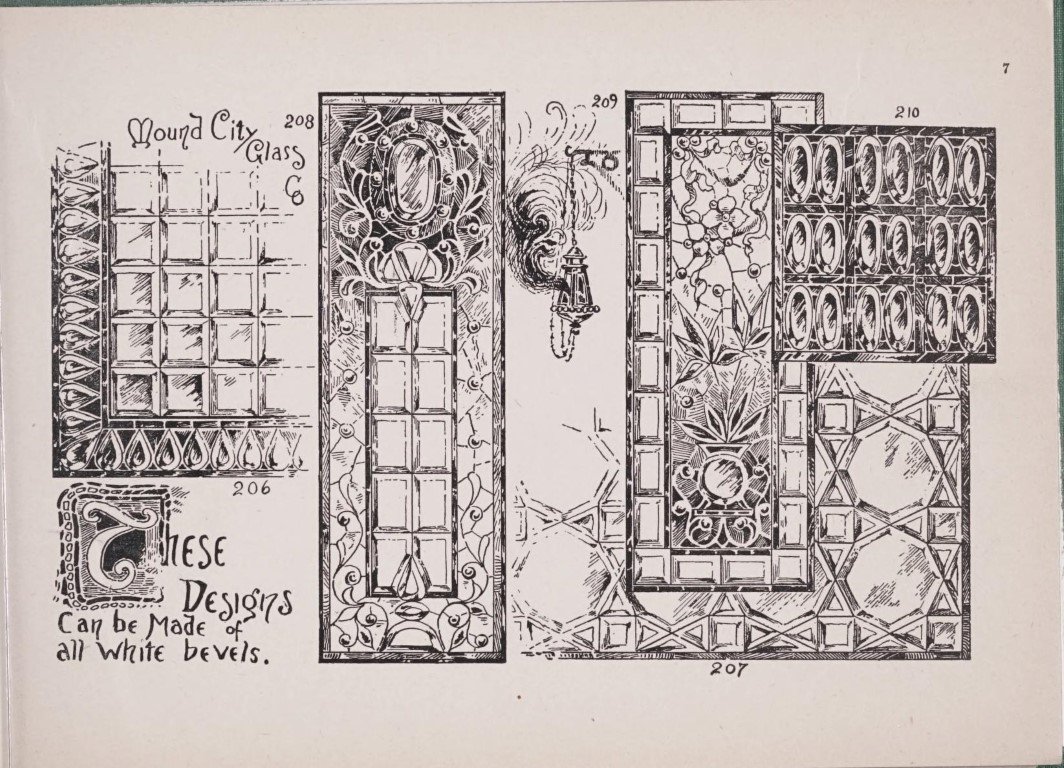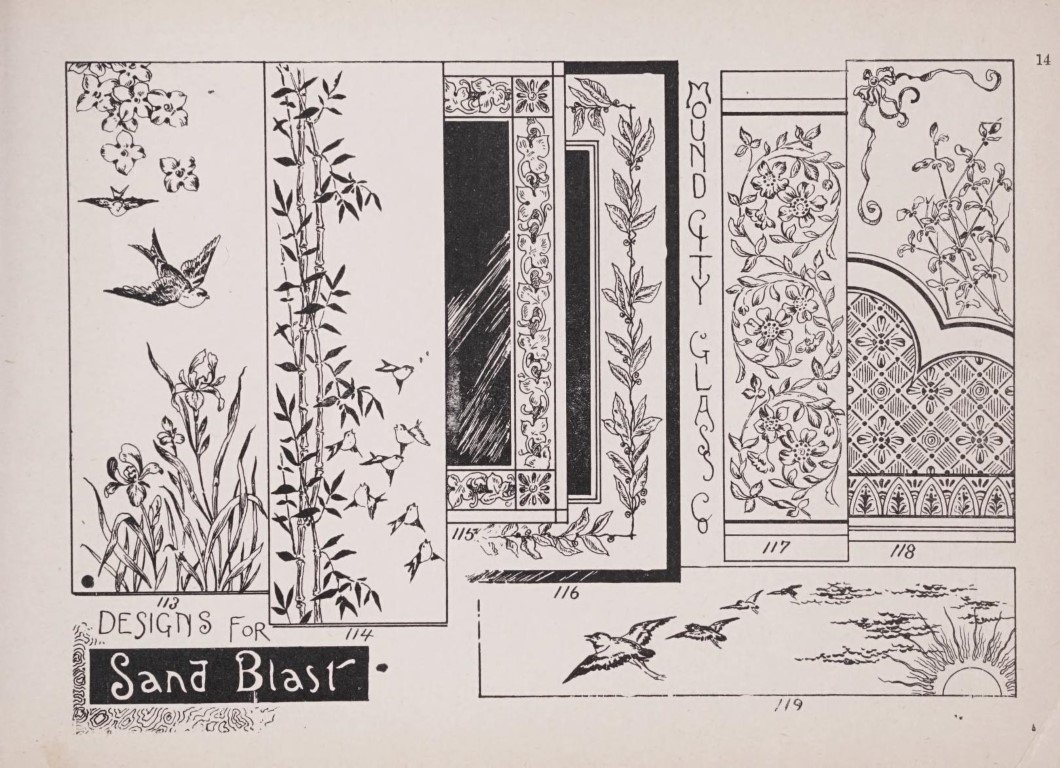Mound City Glass (historical catalog)
/The 1889 catalog of the Mound City Glass Company in St. Louis, Missouri showcases ornamental glass offerings. They did beveling, sand blasting and embossing….as well as having a stock of plate glass.
Old catalogs reflect the availability and popularity of wares…become a historical record of consumerism of the period. In the late 1800s, the country had a wide range of housing from sod structures to the first skyscrapers. People needed windows to provide light inside those structures so improvements in plate glass production during the 1800s was welcomed. The type of glass produced by the Mound City Glass company must have been popular for anyone with enough money to purchase it…letting light in along with providing a decorative element.
There isn’t much information about the company other than the catalog. The address on the catalog was in downtown St. Louis…maybe the offices/showroom rather than where the glass work was done. I assume that the ‘mound city’ in the name came from Cahokia mounds which are on the eastern side of the Mississippi across from St. Louis. There are places in Kansas, Missouri, Illinois, and South Dakota named Mound City; the one in Missouri is on the other side of the state - north of Kansas City close to the Missouri River; the one in Illinois is in far southern Illinois on the Ohio River which is their border with Kentucky; it doesn’t seem likely that either one would have been the location of the original manufacturing facility.



























